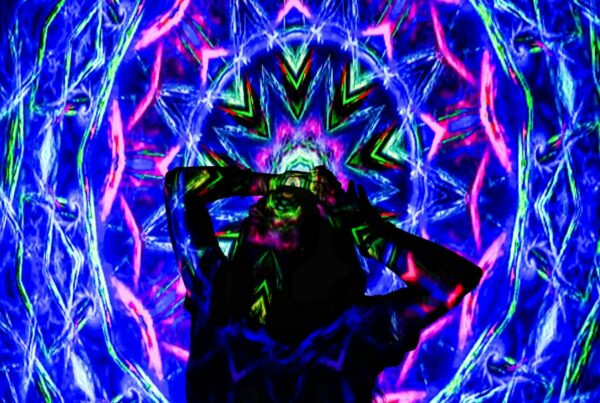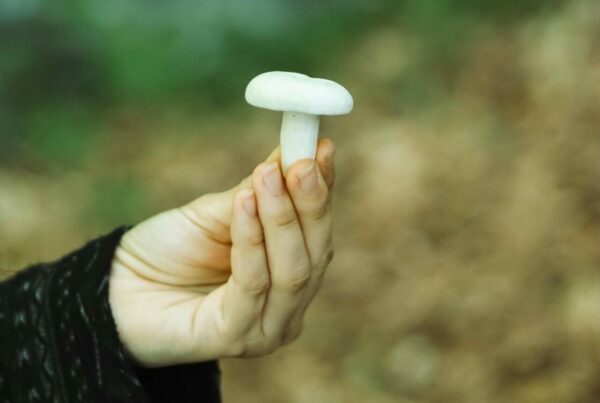Alzheimer’s Disease (AD) is a progressive and debilitating brain disorder for which no cure is currently known. This growing health concern is prompting scientists to investigate more effective treatment alternatives, both organic and synthetic in nature.
In various clinical trials, serotonergic psychedelics such as LSD, DMT, and psilocybin have demonstrated encouraging potential for AD therapy. For more in-depth knowledge, you can explore online resources or consider “purchasing psychedelics online in Canada.”
[toc]
Psychedelics’ Influence on Alzheimer’s Treatment
Conventional psychedelics wield potential in treating early-stage Alzheimer’s Disease (AD) or mild cognitive impairment (MCI), by facilitating the growth of brain cells.
Psychedelics may foster neural plasticity for learning and memory by focusing on specific brain receptors, which could potentially retard or even reverse AD’s neurodegenerative effect. Additionally, psychedelics may mitigate depression and anxiety, commonly found in AD patients, by inducing positive psychological responses.
Debates continue over the workings of psychedelic therapies. Some suggest that profound effects from high-dose psychedelics, such as mystical experiences or ego dissolution, are vital for reaping psychological benefits. Others argue that the biological changes triggered by these substances are the key. Both views may have merit.
Conventional psychedelics appear to aid the brain in adapting and reducing inflammation, even at lower doses. Hence, low-dose therapies could help conditions like brain degeneration or migraines without significant psychoactive effects. However, for depression, anxiety, or addiction, the mind-altering effects seem essential, leading to introspection and behavioural modifications. Thus, exploring both low and high doses is necessary for personalized therapy.
Impact of Serotonergic Psychedelics
There is growing interest in serotonergic psychedelics, including LSD (lysergic acid diethylamide), DMT (dimethyltryptamine), and psilocybin (found in magic mushrooms), due to their potential therapeutic benefits.
The potential therapeutic benefits of psychedelics have generated increasing attention, particularly in relation to various mental health disorders.
Many experts are turning their focus to serotonin receptors, renowned for boosting cognition and modifying neuroplasticity, as a promising field of study in Alzheimer’s Disease (AD) research.
These substances primarily exert their pharmacological effects by modifying the serotonin system in the brain, leading to alterations in perception, mood, and consciousness. The concept is further supported by several study findings as detailed below:
- In particular, the 5-HT2A subtype of receptors impact gene expression of neuroplasticity-enhancing neurotrophins in brain regions affected by AD.
- These receptors also manage cortical signalling, essential for cognition, memory, and synaptic plasticity.
- Even with their unusual distribution within neurons, serotonin receptors contribute significantly to neural development, regeneration, and plasticity.
Significant Research Findings
- Serotonergic psychedelics have shown potential in reducing aspects of AD pathology by promoting neuroplasticity.
- Classic psychedelics influence neurotransmission, encourage synaptic restructuring, and elevate factors that support neuronal survival.
- Specific psychedelics, such as muscimol and Sig-1R agonists, may reduce the neurotoxicity associated with AD progression.
- Classic psychedelics activate pathways in brain regions affected by AD, indicating potential to slow or reverse brain degeneration.
- Psilocybin mushrooms stimulate neural plasticity to promote neurogenesis and induce lasting changes in brain circuits.
- Psychedelics increase brain connectivity by targeting receptor genes and initiating changes in neurons and networks.
Clinical research suggests that both classic and non-classic psychedelics derived from magic mushrooms can influence various biological processes in the brain. These effects encompass swift changes in gene expression and significant modifications in brain structure and function.
These psychedelics interact with receptors such as serotonin, sigma, NMDA, and GABA, resulting in enhanced synaptic plasticity and brain rejuvenation. Consequently, psychedelics could potentially impart positive effects on behaviour, memory, and cognition, presenting them as promising candidates for treating AD and related disorders.
Order Psychedelics Online in Canada
Looking to explore microdosing magic mushrooms? Welcome to our digital store, a comprehensive source for psychedelic products in British Columbia, Canada. We advise initiating your exploration with a reliable medicinal mushroom dispensary.
- LSD
LSD, a man-made drug, is derived from a fungus named ergot that grows on rye. This potent substance can modify perceptions, feelings, and thoughts even at low doses.
Excessive consumption of LSD can cause profound hallucinations, altering your perception of time and space. Be prudent, as drugs sold as LSD might actually be others like NBOMe or a member of the 2C drug family.
| Product | Kittease – Ketamine Microdose Troche (30x50mg) | Zenly – LSD Gel Tabs – 600ug (100ug Per Tab) | Zenly – LSD Gummies – Sour Zen Berry – 200ug (100ug Per Gummy) |
| Purpose | Stress, depression, pain management, PTSD, OCD, job stress, performance anxiety, insomnia, and addiction. | Unique experiences | Unique experiences |
| Dosage | 50mg per troche / 30 per pack – 1.5 grams of ketamine/ per pack | 600ug total/6 Tabs (100ug/Tab) | 200ug total/2 Gummies (100ug/Gummy) |
| Usage Instructions | Consume one full troche | Ingest one full tab for a full experience. Wait at least 2 hours before taking another. | Consume one full gummy for a full experience. Wait at least 2 hours before taking another. |
| Advantages | Quick acting with minor risk, improved receptivity, ideal for self-contemplation and cognitive enhancement. | Accurately measured dose for the perfect trip, lab-tested | Accurately measured dose for the perfect trip, lab-tested |
- Magic Mushrooms
Over 180 species of mushrooms have been found to contain psilocybin and psilocin, compounds renowned for their healing properties and positive impact.
on mental health.The impact may vary depending on the type of mushroom, the specific cultivation batch, the amount consumed, and the individual’s tolerance level. While some people opt for microdosing to experience mild effects, others consume larger amounts for a deeper experience. The quality can also be influenced by the cultivation techniques used.
The Blue Meanies, scientifically termed Panaeolus cyanescens, are small dried fungi that flourish in warm, tropical climates, predominantly on cow and water buffalo excrement. As they develop, they display blue specks on their surface, which gives them their distinctive name.
- These fungi are abundant in psilocybin and psilocin, present in high concentrations.
- Historically, they have been used recreationally, especially among the Balinese people who consume them during celebrations and for artistic inspiration.
- Due to their hallucinogenic properties, they are popular among tourists and travelers in places like Bali. The effects can include feelings of euphoria, hallucinations, happiness, and bouts of intense laughter.
- DMT
DMT, a potent hallucinogenic substance, is present in certain plants such as Psychotria viridis and Chacruna. Commonly known as the “spirit molecule,” these controlled substances can lead to deep psychedelic experiences. They offer a short, yet highly immersive journey characterized by vivid visual and auditory hallucinations.
| Product | Dream Machine – Vape Cartridge – DMT 1ml | Integral Alchemist – ACACIA Changa Pre-Roll | Integral Alchemist – Mimosa- 1ml DMT Vape Cart |
| Description | Explore hyperdimensional realms with DMT. | Experience ayahuasca-like effects with a blend of herbs and DMT. | Embark on a mystical journey full of visions and spiritual revelations with DMT. |
| DMT Content | 1g | Approximately 90mg | 1ml |
| Instructions | Preheat the cartridge and inhale | Consume the pre-roll at a pace that feels right for you. | Draw in the vapor for instant effects. |
| Effects | Intense hallucinations, altered state of consciousness. | A visual trip that lasts for an extended period. | Spiritual awakening, euphoria, significant changes in perception. |
| Duration | Varies from person to person | Can last up to 1 hour | May last up to 30 minutes |
Understanding the Long-Term Impact of Psychedelic Use
Current studies are focused on understanding the lasting effects of psychoactive substances. The phrase “long-term effects” refers to any persistent changes in cognition, emotion, or memory after extended use of psychedelics.
The study of the long-term effects of psychedelics is complex. Some research suggests potential mental health benefits, while other studies indicate possible risks, such as the onset of psychosis.
Despite these challenges, researchers persist in their efforts to understand the long-term implications of psychedelic use on mental health. They are conducting thorough studies and monitoring subjects over extended periods to collect accurate data.
Purchase Cannabis from a Licensed Supplier
Research suggests a significant change in the treatment of Alzheimer’s disease, indicating that psychedelics could revolutionize how we manage brain disorders. Experts propose that therapeutic use of these substances could completely reshape Alzheimer’s treatment, providing renewed hope for numerous patients and their loved ones.
For high-quality products, opt for a licensed supplier like Deadhead Chemist Canada. Offering a wide range of cannabis products, including flowers, edibles, concentrates, and more, Deadhead Chemist Canada ensures genuine, laboratory-tested items that adhere to strict food and drug regulations.
Place your order for shrooms online today.
Frequently Asked Questions
What sets psychedelics apart from other substances typically used in Alzheimer’s treatments?
Psychedelics are unique compared to traditional Alzheimer’s medications in their therapeutic approach and effects. They stimulate the formation of new neural connections by targeting the brain’s serotonin system, thus encouraging emotional well-being through profound psychological experiences.
Unlike standard drugs that primarily manage symptoms, psychedelics are being assessed by Health Canada for their lasting benefits and comprehensive treatment approach, which includes therapy.
Research into the use
The use of psilocybin for ailments like obsessive-compulsive disorder and its favorable safety record in terms of preventing multi-organ dysfunction distinguish it from conventional controlled substances.
Can psychedelic-assisted therapy be an effective treatment for Alzheimer’s patients dealing with end-of-life distress?
Psychadelic-assisted therapy might offer benefits for Alzheimer’s patients who are seriously ill and coping with the looming end of their lives.
- It results in emotional relief. This type of therapy has been shown to lessen anxiety and depression in some people, especially those who are critically ill. Alzheimer’s patients could potentially also gain from this.
- Generally safe when supervised. When given in a controlled setting under the watch of a professional therapist, the use of psychedelics like this typically poses no risk and is well-tolerated by most people.
- Possibly improves quality of life. For an Alzheimer’s patient, an emotional boost can have a substantial impact, even if memory difficulties remain unchanged.
- Further research is required. Even though this therapy looks promising, additional studies are needed to validate its safety and effectiveness for Alzheimer’s patients, especially those who are in the final stages of their lives.
How long does a psychedelic therapy session for Alzheimer’s patients last?
- Preparation Stage. This stage includes one or two sessions, each ranging from 1 to 2 hours. These sessions aim to ready the patient for the upcoming experience, set anticipations and build rapport with the therapist.
- Central Psychedelic Session. This crucial session, where the patient consumes the psychedelic substance, typically lasts between 4 to 6 hours. The patient spends this time in a controlled setting, often lying down with eye shades and listening to music, under the careful supervision of therapists.
- Integration Stage. After the session, follow-up meetings are held to help the patient understand and integrate their experience. These sessions usually last 1 to 2 hours each, with the number of sessions varying.
You might also be interested in:





